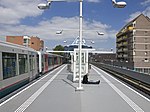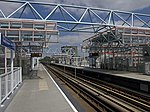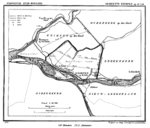Groenedijk Monument
The Groenedijk Monument, also known as the Dukdalf, is a monument in Capelle aan den IJssel that serves as a memorial for the events that took place in 1574 related to the Eighty Years' War, also known as the Dutch Revolt. During the conflict, William the Silent ordered the destruction of several dykes to stop the Spaniards who were surrounding the Dutch city of Leiden. The tactic proved to be successful, as the Spanish troops were greatly affected by the incoming water, which took them by surprise. The Spanish troops lost their mobility, whereas the troops mustered by William the Silent had prepared for the water using small ships. With the help of the controlled destruction of dykes in four strategic locations, the city could be freed with the help of the Sea Beggars, better known as the Geuzen. The people in Leiden, who had been starving for months, could now be fed with herring, which became a Dutch tradition to remember the Siege of Leiden.
Excerpt from the Wikipedia article Groenedijk Monument (License: CC BY-SA 3.0, Authors).Groenedijk Monument
Rinus Terlouwpad,
Geographical coordinates (GPS) Address Nearby Places Show on map
Geographical coordinates (GPS)
| Latitude | Longitude |
|---|---|
| N 51.926829 ° | E 4.607682 ° |
Address
Dukdalf
Rinus Terlouwpad
2924 AX
South Holland, Netherlands
Open on Google Maps








